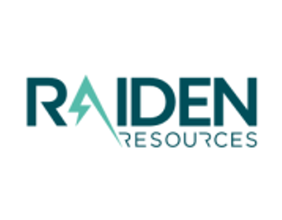The probability of an interest rate cut by the RBA in February 2020 substantially falls following the release of the better-than-expected consumer price index for December 2019 quarter by the ABS. The odds of 25 basis points rate cut next month has slumped from around 20 per cent to 10 per cent subsequent to the ABS inflation figures.
The ABS has reported a quarter-on-quarter rise of 0.7 per cent in CPI in December 2019 quarter against market expectations of a 0.6 per cent increase. Economists are now anticipating the RBA to hold interest rates at 0.75 per cent in its February meeting.
Recently, the Westpac Banking Corporation (ASX:WBC) in its Weekly Economic Report, also pushed out the forecast for two further cash rate cuts from February and June to April and August 2020, given the strength and the significance of the labour market.
The latest inflation data followed strong employment figures declared by the ABS last week, which highlighted an unanticipated fall in the unemployment rate in December 2019.
Inflation Surpasses Expectations in December 2019 Qtr
The recently released statistics by the ABS demonstrated a rise of 0.7 per cent in CPI in December 2019 quarter, following an increase of 0.5 per cent in the September 2019 quarter. Moreover, the CPI increased by 1.8 per cent through the year to the December quarter, following a rise of 1.7 per cent through the year to the September quarter.
As per the ABS, the most significant price rises were observed in tobacco (8.4 per cent), automotive fuel (4.4 per cent), domestic holidays, travel and accommodation (7.3 per cent) and fruit (6.8 per cent) during the December quarter.
On the other hand, the most significant price falls were seen in women's garments (2.5 per cent) and international holidays, travel and accommodation (2.9 per cent).
According to the ABS Chief Economist, Bruce Hockman, drought conditions impacted a range of food products in Australia, with food prices witnessing a rise of 1.3 per cent during the quarter. Along with beef and veal, that saw a jump of 2.9 per cent in their prices, milk (1.7 per cent up), pork (4.7 per cent) and cheese (2.4 per cent) also observed a price increase during the period.
Though the quarter-on-quarter increase in CPI surpassed market expectations, the annual inflation is still below the RBA’s preferred target range of 2 to 3 per cent. Mr Hockman mentioned that the annual inflation remained soft partially owing to some price decreases for housing related expenses.
It is worth pointing out that all the Australian capital cities recorded a rise in CPI during the quarter, as well as through the year to the December quarter (see figure below).

It can be seen that an increase in CPI in all capital cities ranged from 0.2 per cent (Darwin) to 1.7 per cent (Hobart) on a quarterly basis and from 0.5 per cent (Darwin) to 2.7 per cent (Hobart) on an annual basis.
Performance of CPI in 2019
The recent inflation figures declared by the ABS were comparatively better than the figures announced for the other three quarters in 2019. The quarter on quarter rise of 0.7 per cent and year on year rise of 1.8 per cent were the maximum such increases seen in CPI over 2019.
Below figure demonstrates the percentage rise in CPI during 2019, both on QoQ and YoY basis:

It can be seen that over the year, there was a considerable improvement in annual as well as quarterly CPI, which strengthened significantly from showing a flat change in the first quarter to 0.7 per cent increase in the last quarter.
December Qtr CPI Followed Solid Employment Figures
The quarterly increase in CPI was in line with the robust employment figures released last week. ABS reported an unexpected decline in the unemployment rate to 5.1 per cent in December 2019 on 23rd January 2020.
The unemployment rate plunged to its 9-month low level, surpassing the expectations of market experts who were projecting the rate to stay at 5.2 per cent. Moreover, the employment improved by 28,900 people during the month, climbing to 12,981,600 people. As per the ABS data, the rise of 29,200 people in part-time employment drove the increase in total employment.
Though part-time employment increased in December, the full-time employment fell to 8,834,700 people, with a fall of 300 people.
The unemployment rate saw numerous highs and lows during 2019, reaching to a level closer to the one observed in January 2019 (see figure below).

Rate Cut Projections Plummet Considerably
To recall, the RBA made three interest rate cuts of 25 basis points each in 2019 in June, July and October to stimulate growth in the Australian economy. The three rate cuts brought the interest rates to a historic low level of 0.75 per cent, raising speculations of further deductions in February and June 2020.
Now, market experts have pushed out the possibility of the RBA’s interest rate cut call ahead from their earlier projection of February 2020. The expectation of February interest rate cut has declined significantly amidst optimistic unemployment and inflation data.
Moreover, experts believe that the annual inflation figures could have been much higher if there would not have been the sluggishness in housing cost inflation like rent. Over 2019, the utilities prices dropped by 1 per cent relative to the December 2018 quarter, and the rents and the cost of new dwellings for owner-occupiers were mostly flat on the year.
It is imperative to note that the new dwelling purchases by owner-occupiers and rents are the two largest housing-related components of the inflation basket, that account for around one-sixth of the whole CPI basket.
Amidst the current scenario, it is being expected that the recent economic data may provide some flexibility to the RBA to schedule its next interest rate cut. Westpac’s Chief Economist, Bill Evans, highlighted in the bank’s weekly economic report that besides a fall in the unemployment rate, the possibility for further monetary policy easing in 2020 remains intact.
In a nutshell, though the recent unemployment rate and inflation figures are quite optimistic, both are still below the RBA’s target range of 4.5 per cent and 2-3 per cent, respectively. Experts opine that these indicators may delay interest rate cut but will not entirely restrict the RBA from lowering rates amid a sluggish economy.





